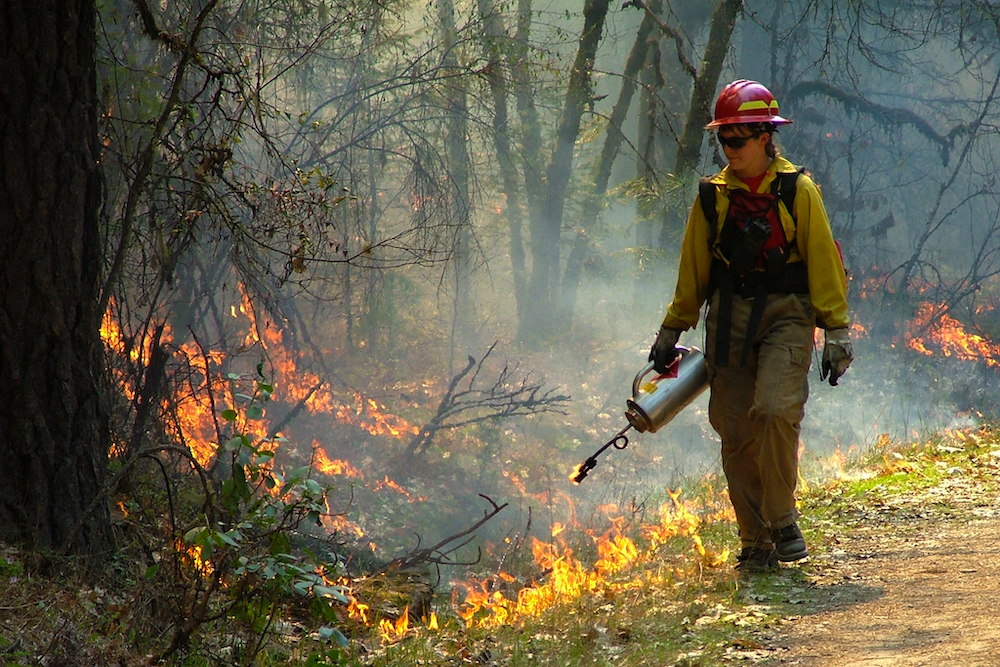
- Details
- By Chez Oxendine
- Food | Agriculture
Tribal partners working with the US Forest Service have a chance to bolster their capacity for wildfire fighting and prevention projects thanks to a $500 million investment announced by the USDA during a Tuesday press call.
The investment includes $400 million to support ongoing efforts across 21 priority landscapes, including many regions that include tribal forests, projects and communities, as well as $100 million to launch the Collaborative Wildfire Risk Reduction Program (CWRRP).
Tribes in 24 qualifying states are among eligible partners for the CWRRP, which will focus funding on “non-traditional partners” representing minority and underserved communities. The $100 million of funding, which comes through the Inflation Reduction Act (IRA), will be allocated through a competitive internal process, per the program’s website.
The latest investments build on existing co-stewardship agreements forged in the last two years between the Forest Service and tribes across the country, as the Forest Service employs Indigenous techniques and knowledge in their strategies, Agriculture Secretary Tom Vilsack told Tribal Business News during the Tuesday press call.
“We have incorporated that knowledge into our management,” Vilsack said. “We are paying attention to strategies that have worked in the past for the many millennia that they’ve been practiced. We take information and direction from the tribes in utilizing our various tools — and all of this is done cooperatively with the tribes.”
The new investment will support projects such as removing hazardous fuels, managing prescribed fires to create firebreaks, and hiring and paying firefighters throughout both the priority areas and the CWRRP’s new jurisdictions. Tuesday’s investment builds on $1.4 billion of existing funding from the Bipartisan Infrastructure Law of 2021, as well as an additional $1.8 billion through the aforementioned IRA.
“As climate change exacerbates the challenges our communities, forests and infrastructure face from catastrophic wildfires, our answer to those challenges have to match the scale of the threat,” Vilsack said in a statement issued after the press call. “We have already made progress, but there is still much to be done. This additional investment, thanks to President Biden’s Investing in America agenda, will help deliver the tools and resources our employees, partners and communities need to protect lives and livelihoods across a vast, shared landscape.”
Last year, the agency signed 120 new forest co-stewardship agreements, and more than tripled its co-stewardship investments to $68 million. Tribal partners in priority areas helped with more than 4.3 million acres of hazardous fuels reduction work, including nearly two million acres of prescribed burning, in national forests and grasslands, per the USDA statement.
Now that work can expand beyond priority areas and into places where at-risk communities could use the help, Forest Service Chief Randy Moore said in a statement.
“We are pleased with the record-setting pace and scale accomplished by Forest Service employees, partners, Tribes and communities,” Moore said. “These investments will allow critical work to continue in the 21 priority landscape areas and begin intensively in other high-risk areas across the country that will be determined through the new program.”
